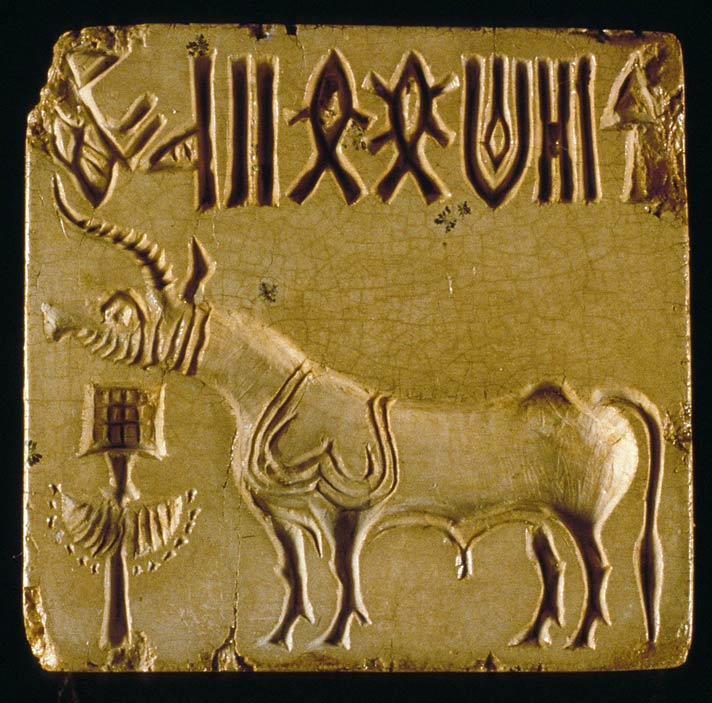
The "unicorn" is the most common motif on Indus seals and appears to represent a mythical animal that Greek and Roman sources trace back to the Indian subcontinent. Two different fish signs are visible. Discovered in Mohenjo-daro in 1931.
Submitted by Richard Sproat
Iravatham Mahadevan
There is no new evidence regarding the identification of the fish sign as ‘min’, suggested first by Fr.Heras and later followed by the Russian scholars and most notably by Asko Parpola . More recently Bonta has suggested that the word ‘min’ is borrowed in the sense of a weight from Sumerian- Akkadian sources. In my earliest paper (1970) I had supported the rebus decipherment of Heras . Later I have developed doubts about the correctness of this identification. I had mentioned my misgivings in my review of Parpola’s book (1994). Walter Fairservis abandoned the identification of fish and said it represented a loop. I think he went too far, throwing the baby out with the bath water. My present position is that the fish signs do represent pictorially the fish, but they do not mean stars or planets but something else either by extended ideographic significance or by rebus from other fish words in Dravidian. I have not published anything about the fish signs during the last forty years due to my misgivings about the present theories. I am presently working on a different solution to this problem and hope to publish my new ideas in a forthcoming paper before the end of this year.
Asko Parpola
Yes, a new interpretation along these lines was published in Scripta 1 (2009), in my paper 'Hind leg' + 'Fish'. This proposed decipherment of the 'hind leg' sign is supported by the subsequent interpretation of another sign that occurs as an immediate sequel to the 'hind leg' sign (presented in a paper on the Asiatic wild asses , with J. Janhunen, as co-author, now in press).
